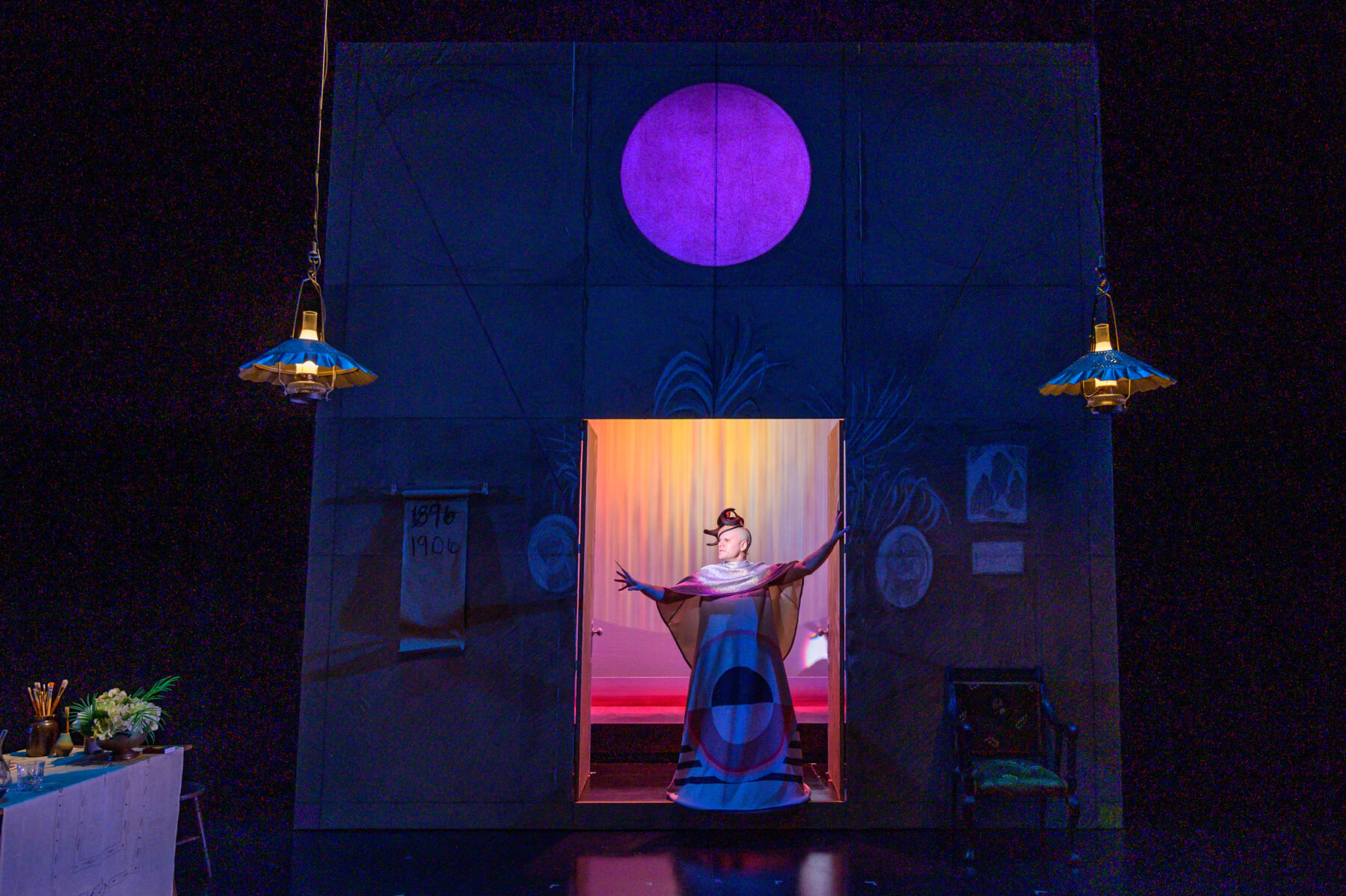

June 24, 2024
RnD Young-Howze Theatre Journal
Who gets to decide who is canonized as one of the masters and who is labeled a cook? If Hilma Af Klint was around today documenting the building of her spiral temple on TikTok and talking about the commission from Amaliel she might have gone viral, or gotten her own TLC special nestled between strange addictions and hoarders. Yet she might have been in a world that could have seen her for the woman that she was, the artist that she was, and the lover that she was. Kate Scelsa and Robert M. Johanson create a contemporary opera that tells us the story of Hilma an artist and pioneer who had to envision an astral plane where gender was fluid, where love was love, and where she could belong. Directed by Morgan Green and created in partnership with Wilma Theater and New Georges this final show in their season is a show that is more of an immersive experience than a story. In fact, it’s an opera where each act might as well be its own show.
Green had to direct three plays in one. We are not going to lie to you and say that this is one opera. Hilma is directed into three very distinct parts the first is a historical “biopic” of Hilma’s journey until she took a break from the mainstream world in 1912. The second is a trippy 1970s muppet show-style journey into the astral plane. And lastly to the modern day where the performers who have just delivered this opera sing us a talkback. These are three wildly different levels of energy, three unique set designs, and three wildly different shows. Yet they all come together to form something that is meant to leave you questioning.
Who gets to decide what the astral plane looks like? Who gets to decide what creates that feeling of queer joy and affirmation looks like from one person to another? When we look at the artist’s imagining of what Hilma Af Klint’s astral plane could look like we see a fractal paradise, moving in a precision with a logic we don’t understand. There seems to be no set gender but a welcoming space where anyone can become what they want. Bodies slide around music and the walls themselves can’t contain the energy.
Scenic designer Robinson and lighting designer Curley show us a queer space that explodes into the cosmos. They create a foundation for choreographer Lisa Fagan and costume designer Matsushima to embody a flowing and precise portrait of the universe sending itself. They showed us a world without constructs.
We counted and it took three people to put the score of this show together. Johanson’s composition sounds like ABBA and Styx getting in a musical bar fight (if you’re old enough to get this reference take your pills) It is the work of the orchestrators and the programmers that bring this small but mighty orchestra to life. Also, the band had to be its character with its choreography further melting traditional roles of theatre into this glorious melting pot of an opera.
Who gets to decide what artists owe their posterity? Do they owe it to us to be bisexual chaos monsters with sexual exploits so legendary cis white men exploded from the shockwaves alone? Does every female artist in history have to be our definition of a patriarchy fighter? To be honest, if they were our biographies of them would have to include the bloody violence that befell our matriarchs that fought the system. Scelsa’s libretto examines the effect our revisionist history has not just on our heroes but on us. What do we owe our posterity? Maybe just living and loving is enough.
The first part gives us a traditional three-part structure, the hero, their villain, and how they overcame, the second part is beautiful colorful madness. The third was dedicated to all the questions even the creators of this work were left with. There was no villain, there was no hero, there were only people. There was only a misunderstood artist and a man who had other things on his mind. How many artists get ignored now because the gatekeepers had a schedule to keep? Yet how many of us would move to hide our work for a future world that would embrace it with readiness? Hilma was forgotten by choice. She made the gutsy choice to hide her work for 20 years after her death. Most artists would want the recognition immediately. She knew she was ahead of her time and no one would know what she meant. No one understands the texture shapes or colors of her work.
This is a show where you can’t pick a stand-alone performer. For once in our life we have found a group project where everyone did the heavy lifting. The collaborative feel of Hilma gave every performer (whether they were Hilma or the one-scene role of Steiner) a part of this show’s greater puzzle. You can especially see this in the end when the actors have to play a fictional version of themselves. It has to look like a real dialogue but set to music. It really shows the trust they have with one another allowing each artist to explore their part fully.